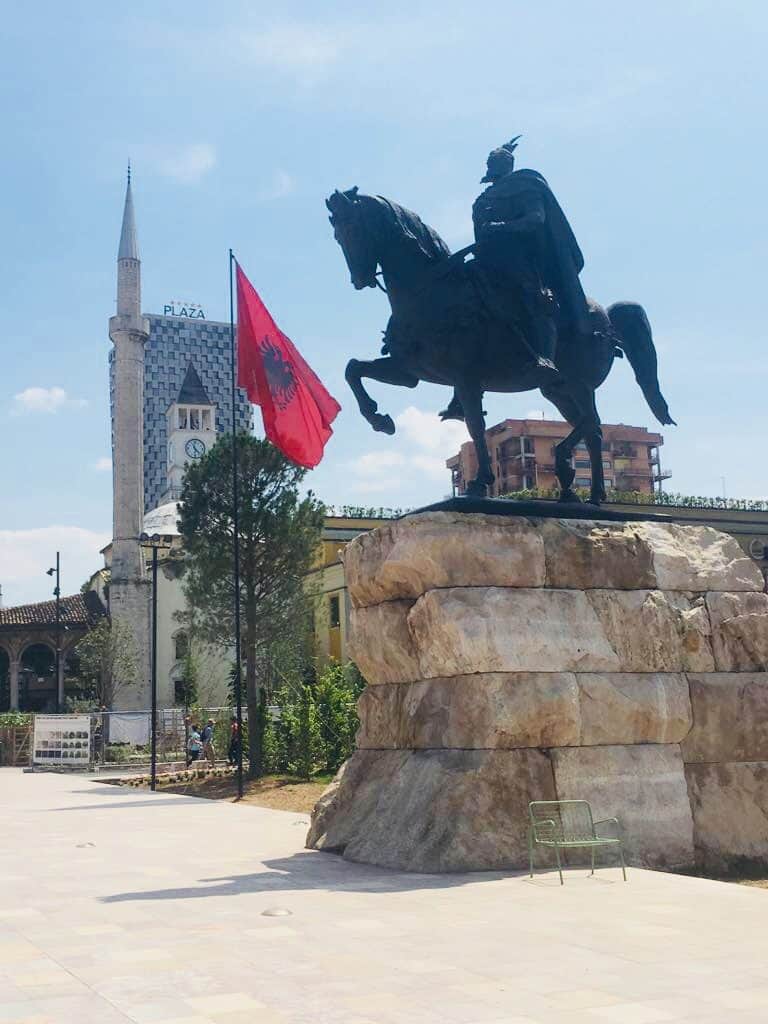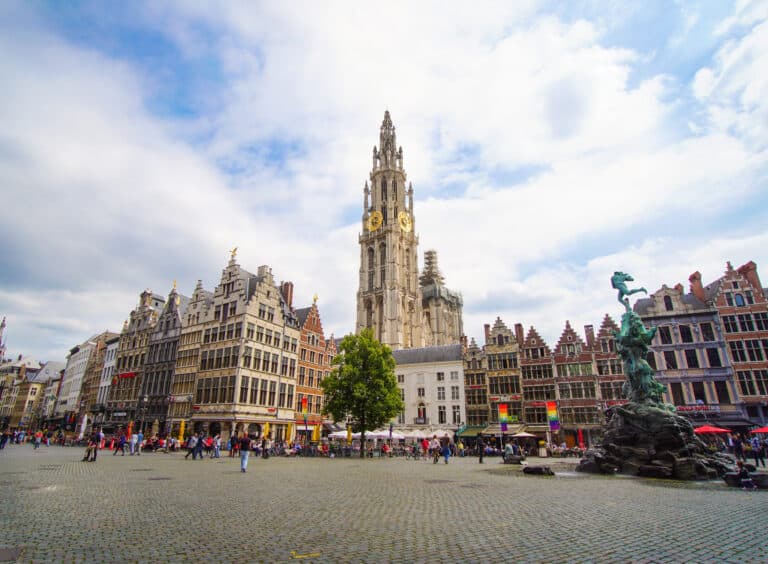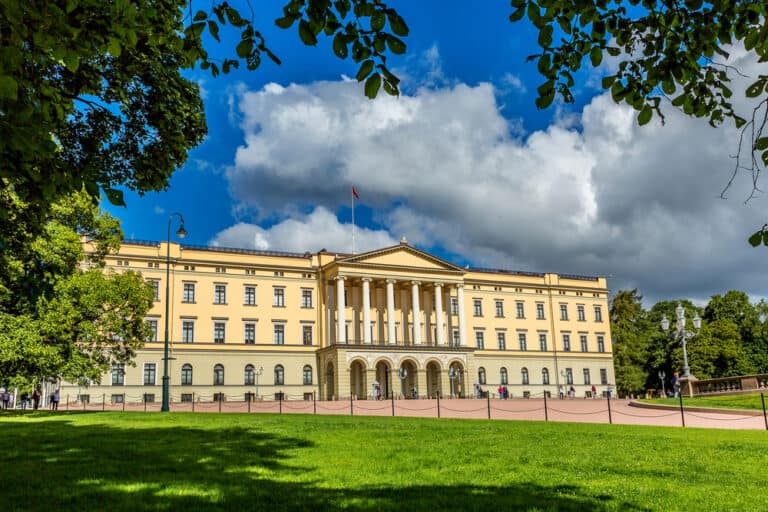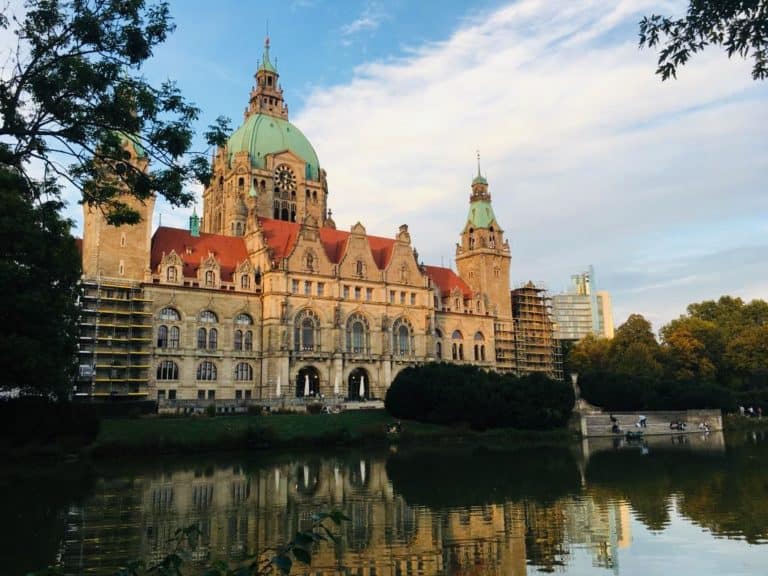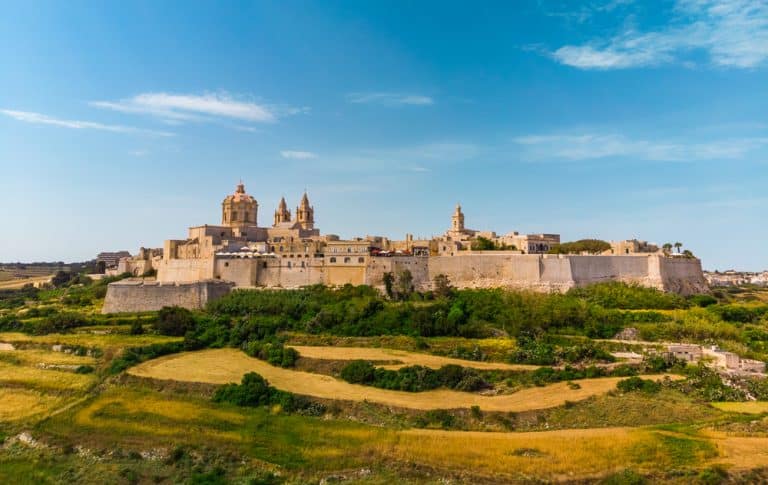The 19 best things to do in Nuremberg, Germany (2022)
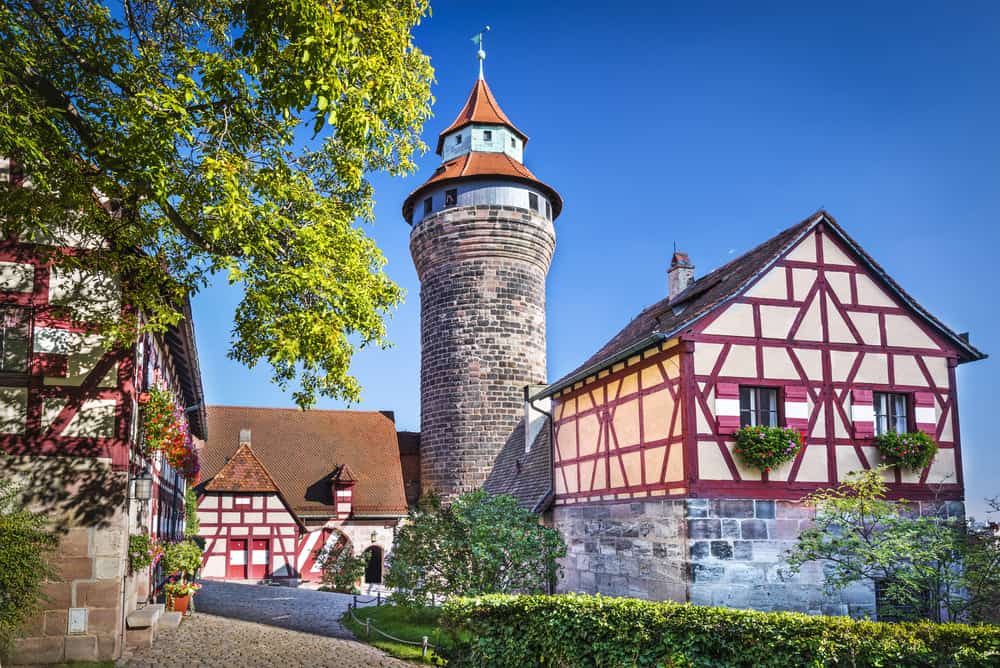
Nuremberg, Germany, is a city with many different attractions to offer visitors. There are medieval old streets and squares to wander through, castles and towers, and walks around the city walls and along the river.
You can also learn about the city’s role in the Second World War, visit some outstanding museums, and go to the zoo.
Whether you’re a history buff, an art lover, or just fancy a short break in a charming historical German city, then Nuremberg is bound to have something to offer you.
Here are some of the best things to do in Nuremberg and to put on your Nuremberg itinerary. I’ve listed 18 below!
This post contains affiliate links
Where is Nuremberg?
Nuremberg (or Nurnberg) is in Bavaria in southern Germany. It is the second-largest city in the Free State of Bavaria after Munich. It sits on the Pegnitz River, which flows through the middle of the old town.
The city is just over an hour north of Munich by train – it’s really easy to day trip here.
You can also visit from Frankfurt, which is about two hours north east of Nuremberg. The capital, Berlin, is around three hours away by train.
How to get to Nuremberg
Nuremberg is well-connected to the rest of Germany by train. The main train station, Nurnberg Hauptbahnhof, is in the city centre. Its proximity to other German cities means it’s easy to come for the day or for just a short break.
There is also an airport in Nuremberg that has connections to other European destinations, including with carriers such as British Airways and Ryanair. The airport is around 8 kilometres from the city, and so it’s a quick 15-minute train journey into the centre.
You can also book private transfers into Nuremberg.
How to get around Nuremberg
Nuremberg is a relatively small and compact city, and it’s easy to get around on foot. The old town is especially well-suited for exploration on foot as the streets are narrow and there are some pedestrian-only areas.
You can sightsee independently or book a guided tour. The tours provide you with a guide who will take you to the main sights and give you an overview of the city’s history.
Or if you don’t fancy walking or the weather is not good enough for this, you can jump on the miniature sightseeing train that trundles through the city.
There is also a hop-on/hop-off bus.
The Nuremberg Card
Consider buying the Nuremberg Card when you’re sightseeing in the city. The card gives free travel on public transport within Zone A and free entry to some of the top attractions in Nuremberg. It includes some of the sights I’ve listed below.
If you’re planning to visit even just a few museums here, then this would be good value for money.
Click here to buy a Nuremberg Card.
The 19 best things to do in Nuremberg
There is a wealth of top attractions in the city. Below I have listed 19 of the top things to do in Nuremberg.
Explore the old town and its three famous churches
One of the best ways to explore Nuremberg is simply by walking through its charming old town (altstadt).
Although the city was largely flattened by Allied bombing, destroying at least 90% of the buildings, there are still many quaint parts to explore. The old town has narrow streets filled with well-preserved medieval half-timbered houses, historic churches, and a castle.
Weissgerber Street (Weissgerbergasse) is a good example of this. It’s an attractive old street with several timber-framed houses that survived the wartime devastation. The street is said to be among the most photographed places in Nuremberg.
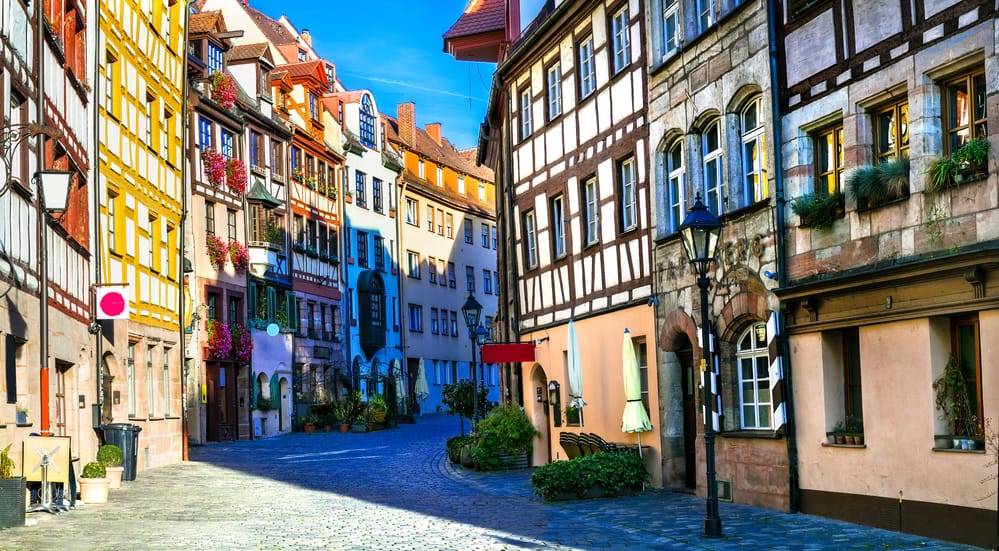
There is also a river flowing through the old town. It is straddled with pretty little bridges and viewpoints to look over the water. There are some pleasant walks to be had along sections of the river.

You can join a walking tour of the medieval old town that will take you around the main attractions. However, if you prefer to explore independently, this map of the old town is helpful.
The Hauptmarkt and the Frauenkirche church
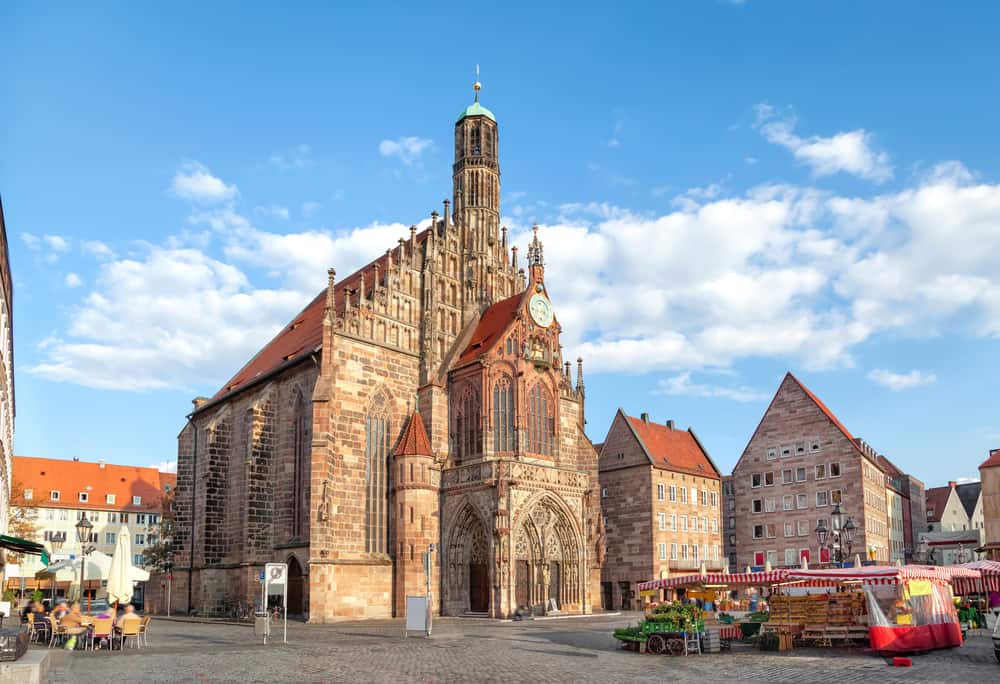
One of the key places to head to in Nuremberg’s altstadt is the main market square – the Hauptmarkt. It is a wide open space that features a daily food market. Stalls set up in front of the 14th century Frauenkirche gothic church selling flowers, fruit, vegetables, bread, and cheese.
If you’re there during the week, it’s a great place to grab a quick snack after popping into the church. And if you’re here at noon, look up and see the church clock chiming and the figurines that march around the Holy Roman Emperor.
The Hauptmarkt is also where the famous Nuremberg Christmas market is held. This market is one of the most famous in Germany and attracts visitors from all over the world. It is open from 25 November to 24 December in 2022.
St. Sebaldus Church
Beyond the market square, and past the city’s town hall (rathaus) is the St. Sebaldus Church, also in the old town. The church – named after St. Sebald, the patron saint of Nuremberg – is regarded as one of Nuremberg’s most important historical sites.
It was built in the 13th century and is one of the oldest churches in the city.
St. Lorenz Church
In the other direction, away from the market square, you’ll find the third of the three churches that are said to be the most important in the city – St. Lorenz Church in the square of the same name. This church was also built from the 13th century onwards in a gothic style. It was one of the first German churches to become Lutheran.
St. Lorenz Church has two towers that are around 80 metres high. You can climb up these towers for wonderful views across the city of Nuremberg.

Visit the Imperial Castle of Nuremberg
The Imperial Castle of Nuremberg is a medieval fortress that served as a residence and visiting place for emperors during the Holy Roman Empire (according to the website, some emperors visited over 50 times). A walk up to the castle is one of the top things to do in Nuremberg.

It has been through many changes since the Middle Ages, including under the reign of King Ludwig I in the 19th century and later that century by his son Maximilian II. Restoration was then needed after World War II when the castle lay in ruins.
The Nuremberg castle complex is now a fascinating place to wander around and look down over the city from.
For a particularly great view, climb the Sinwell Tower, so named because of its round shape. You’ll also get to look at photos of the city after it was bombed during the Second World War (fortunately the tower itself escaped destruction).

You can also see the 50 metre Deep Well in the well house that supplied the water to the castle on a tour around the complex.
Between April and October, the castle is open from 9 am until 6 pm. At other times of the year, the hours are 10 am to 4 pm. The gardens are only open from April to October from 8 am until nightfall.
Pop into the Handwerkerhof market and try the Nuremberg Bratwurstglöcklein
If you’re visiting the St. Lorenz Church, it’s worth the short walk to the Handwerkerhof market (artisan’s yard).
This is a charming courtyard in the old town filled with shops where you can watch craftsmen making everything from handmade jewellery to ceramics, pottery, and traditional toys.
Handwerkerhof is also one of the best places to go for Nuremberg’s Bratwurstglöcklein (sausage). The Bratwurstglöcklein restaurant cooks and serves it in the original 14th-century fashion.
Walk around the city wall
Nuremberg’s old town is surrounded by a wall that began to be erected in the 12th century to protect the city. At 5 kilometres long, it is said to constitute one of Germany’s most extensive defensive systems.
You can walk around the wall, which is a great way to see some of the old town from a different perspective. You’ll see the four remaining city towers along the way.

Go down into the medieval dungeons
If you want to learn about some of the city’s darker side, there is a small museum in the cellars of the old town hall which might interest you. Referred to as the “Nuremberg Hole”, it’s said that this is one of the biggest city prisons that still exists from the Middle Ages.
Its original function was more benign – as a place to sell bread. But when the building became the town hall, it took on the role of prison, specifically to house remand prisoners.
There are various rooms to see when you visit, including the cells that housed different types of prisoners, the torture chamber, the kitchen, and the hangman’s room.
You can only visit as part of a 35-minute guided tour, and only a maximum of 25 people can go in at any one time. Pre-booking is therefore advised.
See the house where one of the most important artists of the Renaissance lived
Albrecht Durer is said to be one of the most important artists of the Renaissance, and his house in Nuremberg – which thankfully survived the wartime bombings – is a must-see for any art lover.
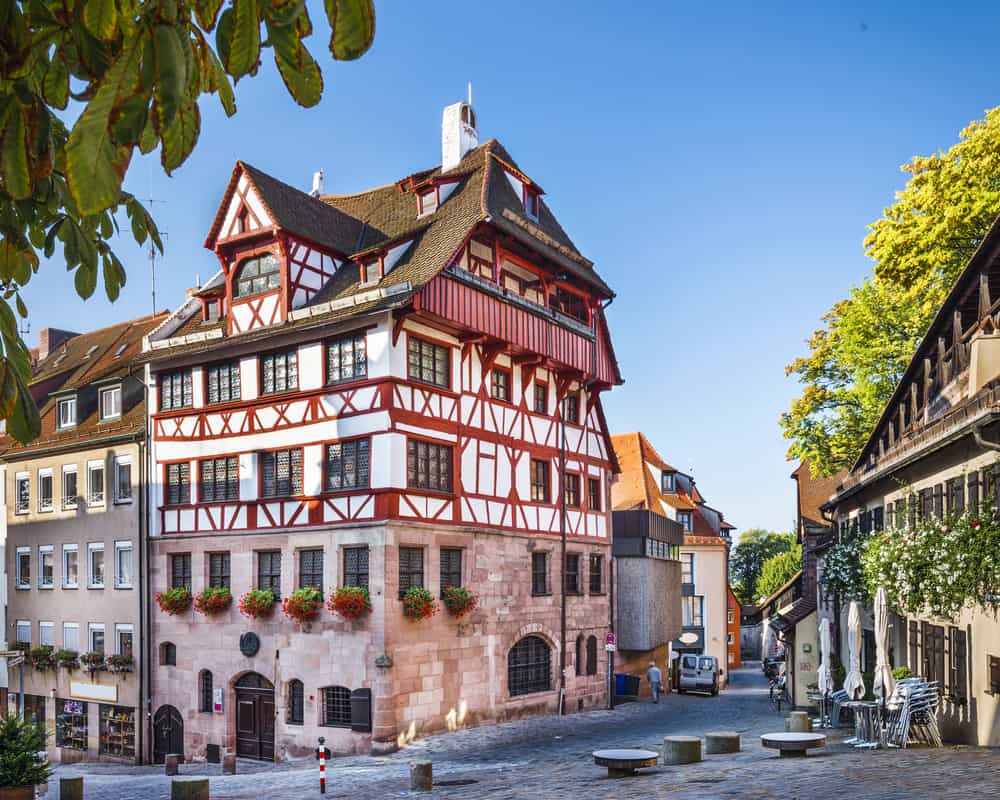
The attractive half-timbered house sits on the street of the same name and dates back to 1509. It was where Durer lived and worked for almost 20 years.
It now contains a collection of paintings, drawings, and prints by Durer laid out over the four storeys of the house. You can also learn about the techniques that he employed in his artwork.
Albrecht Durer’s house is open from 10 am until 5 pm between Tuesday and Friday and between 10 am and 6 pm at weekends. Between July and September, it is also open on Mondays.
At 3 pm on a Tuesday, Wednesday, Thursday, and Saturday, and 11 am on a Sunday, you can also book to tour the house alongside an actress in the role of Durer’s wife. This gives an added insight into the artist and his life in the house.
Learn about German culture at the Germanisches Nationalmuseum
The Germanisches Nationalmuseum – Germanic National Museum – is the place to go to if you want to learn more about the culture and history of German-speaking countries.
The museum was founded in the mid-19th century and has a collection of over 1.3 million items. Its different sections cover collections of 19th and 20th century art, clothing from the 1700s, scientific instruments, musical instruments, toys, weaponry, and prehistoric artefacts. It’s an eclectic collection with something for everyone.
It also holds temporary exhibitions that periodically change. It currently has one on the art of the 15th century, which runs until early April 2023. Another has a collection of art and artefacts associated with war and peace. This runs until the end of July 2023.
The museum is open from Tuesday to Sunday between 10 am and 6 pm (8.30 pm on Wednesday evenings).
Get lucky at the Schoner Brunnen
Nuremberg has a large ornate 14th-century gothic fountain – the Schoner Brunnen or “beautiful fountain” – in the main square near the church in the Hauptmarkt Square.
Standing 19 metres high with a striking gold Gothic spire in the middle, you can’t miss it.

The fountain is beautiful and if you take a close look you’ll see a range of different figures on the outside (there are 40 of these).
There are also two rings on it. Legend says you can bring yourself good luck by turning a golden ring on this fountain.
View some contemporary art in the Neues Museum
This is another city museum for art lovers.
The Neues Museum (New Museum) is a modern art and design museum near to the city’s main train station. It was opened in 2000 and showcases art dating back to the mid-20th century.
The museum contains a number of different sections that showcase art, photography, sculpture, and video. Displays cover works by Sebastien Troger, an artist from the city, Gerhard Richter, Miriam Cahn, and Claus Feldmann.
You can visit from Tuesday to Sunday between 10 am and 6 pm. It is also open until 8 pm on Thursdays.
Go into the venue for the Nuremberg Trials
There’s a lot to do in Nuremberg. But I recommend that you don’t leave without learning a bit about the events that occurred here during and after the Second World War.
This includes the Nazi war trials that were held in the city in the 1940s. These are the most expensive criminal trials ever. And so if you’re interested in world war history, visiting Courtroom 600 in the city’s Palace of Justice where these took place is a must.
The courtroom
You get to go into the courtroom on a visit to the Palace of Justice. The archive photos displayed here and the audio that comes with your ticket explain the reason for holding the trials in this particular place and the scale of the operation.
Although Nuremberg had been a focus for Nazi rallies in the 1930s, the main reason for the location was more practical than symbolic. The city had a large enough court to host the procedures and was also connected by an underground tunnel to a prison. It meant that the defendants could be securely transferred for the court sessions.
Even so, the main court room required an extension. This included adding on a balcony to accommodate the sheer amount of public and worldwide press attending the hearings.
The windows also had to be blacked out to protect the judges, and a dock needed to be built to fit all 21 defendants on trial.
If you want to visit the courtroom, I recommend going on a Friday. Courtroom 600 is still a working court and can only be accessed when not in session. This will therefore increase your chances of being able to go in.
Visit the Palace of Justice’s museum

You can read more about the trials and the Nazi regime with a visit to the small museum on the floor above the courtroom. There’s a fascinating collection of photographs and video footage available. It’s worth browsing the displays if you have time.
There are pictures of the huge Nazi rallies in Nuremberg and elsewhere in Germany, which quickly fuelled support for the Nazis. You can see the courtroom in session and some leading war criminals, such as Hermann Goering, giving evidence.
The museum also demonstrates that justice was not entirely served by the trials. Some Nazi leaders, including Adolf Hitler – escaped prosecution by taking matters into their own hands and committing suicide to evade capture.
The museum is only small, but it’s excellent. Do try to pop in during your visit to Nuremberg.
Learn about the Nazi Party rallies in the city
If you want to learn more about the Nazis in Nuremberg, head to the Documentation Center Nazi Party Rally Grounds. This was the site of the Nazi Party rallies in the 1930s during the Third Reich.
The remains of these rallies can be seen here, including the huge Congress Hall (with a planned capacity of 50,000 people) and the Zeppelin Field where Hitler used to address crowds of thousands.
The museum has a wealth of archive materials and official documents showing the scale of the rallies and the plans being put in place for further expansion. There are also some moving installations to see when you visit.
The museum is a little out of the city centre, but you can get there by tram. It’s well worth the effort to go. For me, it’s definitely on the list of the top things to do in Nuremberg.
The museum is open from 10 am until 6 pm every day.
For a tour of the Nazi Rally Grounds, click here.
Alternatively, consider this tour which combines tourist attractions in the old town with a trip out to the Rally Grounds.
See some animals
If you need something more uplifting after seeing some of the darker sides of the city, then you may fancy a trip to the zoo.
Nuremberg’s Tiergarten is located in a large park (it calls itself a “landscape zoo”). It is home to more than 50 mammals and 150 species of birds, plus an impressive collection of different reptiles. These include monkeys, rhinoceros, snow leopards, camels, deer, manatees, tapirs, lizards, and turtles.
There are also ponds where you’ll find penguins, otters, and dolphins. A more recent dolphin lagoon, a larger pool where dolphins and sea lions can live in more natural surroundings, is also worth seeing. At the moment, the pool is home to six bottlenose dolphins.
The zoo is a good place to visit for some fresh air and to see some animals. It also has a miniature train modelled on the first German railway from the 1830s.
The zoo is open every day from 9 am until 5 pm.
See a life-size Adler steam train
If you’re a train buff, then the DB Museum (Deutsche Bahn Railroad Museum) is somewhere you won’t want to miss (or even if you’re not – I loved it).
The museum’s permanent exhibition focuses on the history of the German railway which started in the city in the 1830s.
Alongside miniatures of early trains that depict how they have changed over time, there are real trains on display that you can walk around. Among these, you get to see a full-size beautiful old Adler steam train and an up-to-date Ice (InterCityExpress) Train.
In a second permanent exhibition, you can learn about the history of train stations and their waiting rooms.
The DB museum is open from 10 am to 5 pm between Tuesday and Friday and then between 10 am and 6 pm on Saturday and Sunday.
Get an insight into the city’s industrial development
Nuremberg’s Museum of Industrial Culture is a fascinating place that tells the story of the city’s move to industrialisation. It is, therefore, fitting that it is housed in an old screw factory in the city.
It showcases various aspects of the industrial past, including factory work, steam engines, the cinema, school classrooms, household gadgets, and the houses where workers lived.
The museum has interactive sections where visitors can get involved. There is also an extensive collection of motorcycles and of sports memorabilia.
The museum is open from 10 am to 5 pm, Tuesday to Friday, and then from 10 am and 6 pm on Saturday and Sunday.
Relive your childhood in the Toy Museum
Nuremberg’s Toy Museum is a great choice if you’re looking for a fun museum that will bring back memories of your childhood. It is home to a huge collection of toys from all round the world, and it’s sure to bring back memories.
The museum displays a generous collection of toys from the past and present. It houses a large collection of dolls which have a long history of being made in the city that stretches back to medieval times.
There are also old teddy bears, tin soldiers, model trains, Meccano sets, and more recent lego and Barbie dolls.
It’s a real treasure trove and a great place to explore.
The toy museum is open from 10 am to 5 pm between Tuesday and Friday and then between 10 am and 6 pm at weekends.
Appreciate the Way of Human Rights
Nuremberg is home to the Way of Human Rights, an outdoor sculpture that commemorates the adoption of the Universal Declaration of Human Rights.
The sculpture consists of 27 concrete pillars, each of which is 8 metres high, as well as two plaques at ground level and a cypress oak. Each one has an article from the Universal Declaration of Human Rights inscribed on it in both German and a different language.
The Way of Human Rights is near the German National Museum so take a look if you’re in the area. You won’t need long here, but it’s worth visiting. The sculpture is a powerful reminder of the importance of human rights and how they should be defended and preserved.
Get festive at the Christmas market
If you’re in Nuremberg during the Christmas period, you’re bound to visit the Christkindlesmarkt.
This festive market is held in the main square and is one of the oldest and most popular in Germany. It’s a great place to buy presents, enjoy some hearty food and festive drink, and soak up the Christmas atmosphere.

The market is open from late November until Christmas Eve, and there’s something for everyone. You can buy traditional German Christmas decorations, toys, sweets, and more.
There’s also an excellent selection of food and drink on offer, from hot Gluehwein to sausages, and gingerbread and almond cookies. There are also horse-drawn carriages that you can ride in.
The Christkindlesmarkt is a must-visit for anyone who wants to experience a traditional German Christmas.
For more information on this year’s market, click here.
And if you are in the city around Christmas time, you may be interested in this culinary tour.
This takes you around the market, provides you with information on German Christmas traditions, and allows you to sample some Christmas fare.
Other ideas for short breaks in Germany
I hope my overview of some of the best things to do in Nuremberg is helpful. And if you are planning a trip here, you might also be interested in another post I have written about 2 days in Munich.
I’ve also provided an itinerary for a day in Berlin.
Or if you fancy a trip to a smaller German city, oozing with charm and historical sights, then take a look at this guide to Tubingen.
For other ideas for short breaks and day trips in Europe, see my website.


